


ISSUE 24 | SPRING ‘23 Sparks Magazine at USFTM An Asian Pacific Islander American Publication
Sparks Magazine is a collaborative project between students at the University of Central Florida, University of Florida, and the University of South Florida. Sparks Magazine at USFTM thanks the following student teams for their contributions to this issue.
UNIVERSITY OF FLORIDA
EDITOR-IN-CHIEF
MANAGING EDITORS Mercy Tsay • Loryn Smith
FINANCIAL DIRECTOR Marium Abdulhussein
COPY EDITORS Hanna De La Garza • Aliza Ahmed • Karen Zhang
DESIGN EDITORS Aryam Amar • Mercy Tsay • Elyza Navarro
PHOTO EDITOR Refat Roja
PUBLIC RELATIONS DIRECTORS Jackie Truong • Destiny Tran
WRITERS Morgan Hurd • Dzung Nguyen • Tarryn Nichols • Yeleeya Li • Aize Hassan • Ian Kim • Ally Maldonado • Justin Fernandez • Lex Mundy • Isabelle Coleman
DESIGNERS Lauren Shee • Mya McGrath • Kate Lynn Pudpud • Tiffany Vivi Nguyen • Srinithi Reddy
Madison Edwards • Leyun Wang • Divya Somayaji • Shiyin Hong
PHOTOGRAPHERS Carolina Tortorelli • Eileen An • Cami Chan • Leyun Wang • Marira Vanderbilt • Hayli Balgobin • Macy Phan • Kat Tran
PUBLIC RELATIONS Tammy Nguyen • Vy Nguyen • Angela Han • Ashley Twilley • Ellie Uchida-Prebor • Michelle Tang
FOLLOW US ON SOCIAL MEDIA

FACEBOOK @USFSparks INSTAGRAM @usf_sparks_mag
TWITTER @usf_sparks_mag
sparks-mag.com

UNIVERSITY OF CENTRAL FLORIDA
EDITOR-IN-CHIEF Asma Ahmed
MANAGING EDITOR Zoey Young
FINANCIAL DIRECTOR AJ Johnson
PUBLIC RELATIONS DIRECTORS Grace Casanova • Jenna Ho
WEB EDITOR Liana Progar
WRITERS Sketch Mathew • Liana Progar • Caitlyn Mari Koerner •Khadija Nemazie •Monique Toon •Nora Layne
DESIGNERS Arianna Flores • Manaal Sheikh • Maliha Versi • Isabella Maldonado • Sunitha Kishore
PHOTOGRAPHERS Nathan Swinburne • Samuthira Sivashanmugham • Abbigail Huynh
COVER
PHOTO Kaniz Angel, Khoa Hoang, Mridula Singh, Riya Choksi, Krisha Patel
DESIGN Mridula Singh • Riya Choksi •
MODELS Sanikaa Thakurdesai, Amy Pham, Krisha Patel, Riya Choksi, Mridula Singh, Quyen Tran, Isha Harshe, Kaniz Angel, Khoa Hoang, Abdul Moeed Zahid, Ishita Sen, Vaishnavi Yelchur, Serena Bhaskar, Fariah Ansari, Merita Thomas, Yasaswi Nimmagada, Alphy Antony, Nimrit Doad
NATIONAL BOARD
EXECUTIVE DIRECTOR Jason Liu
CHAPTER DEVELOPMENT DIRECTOR Aleem Waris
MARKETING DIRECTOR Ingrid Wu
DEVELOPMENT DIRECTOR Chelsey Gao
CHAPTER MANAGERS Bryant Nguyen • Samia
Alamgir
SOCIAL MEDIA MANAGER Sally Zhu
SENIOR GRAPHIC DESIGNER Esther Zhan
WEB DEVELOPER Chris Tam
INTERN Jade Wu
•
Sparks Magazine at USF E-Board & Staff



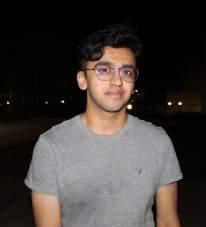





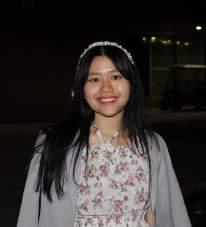






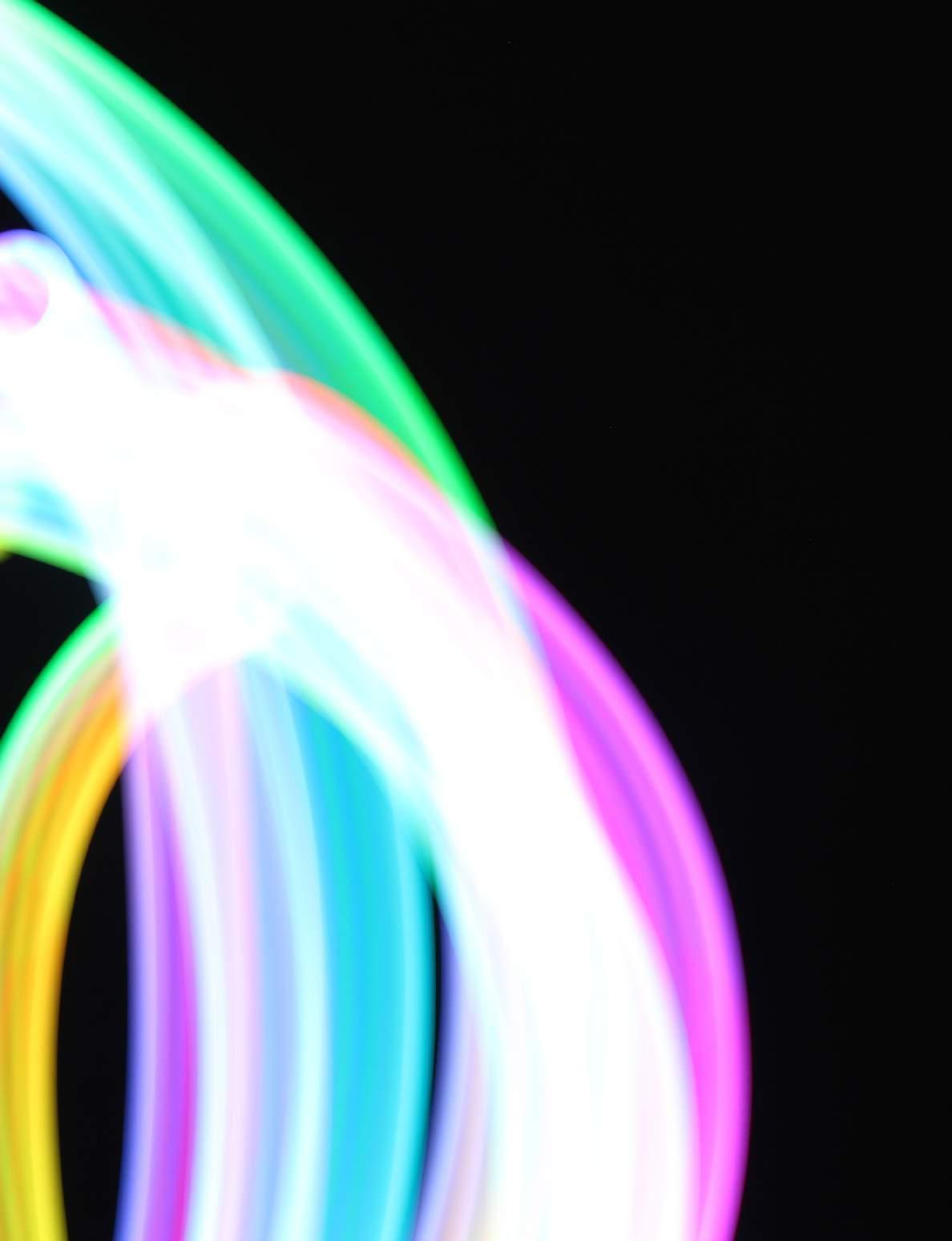
TM
E-Board: EDITOR-IN-CHIEF Sanikaa Thakurdesai • MANAGING EDITOR Amy Pham • CONTENT EDITOR Krisha Patel • FINANCE DIRECTOR Anagha Hesaraghatta • DESIGN EDITOR Amreen Naveen • PROMOTIONS DIRECTOR Quyen Tran • PROGRAMMING DIRECTOR Ishita Sen • PHOTOGRAPHY EDITOR Mridula Singh Staff: WRITER Vaishnavi Velchur • WRITER/DESIGNER Riya Choksi • WRITER Anushri Gade • PHOTOGRAPHER Kaniz Angel • WRITER/DESIGNER Nimrit Doad • WRITER/DESIGNER Merita Mary Thomas • WRITER Abdul Moeed Zahid
Sparks Magazine at USF E-Board & Staff

Staff:







WRITER Yasaswi Nimmagadda • WRITER Serena Bhaskar • DESIGNER Nistha Sevak • DESIGNER Sana Lulu




• WRITER/DESIGNER Khoa Hoang • WRITER Reagan Huynh • DESIGNER Daniela Kate Abaquita • WRITER/ DESIGNER Isha Harshe • DESIGNER Dan Pham • DESIGNER Jessenia Abrigo • WRITER Alphy Maria Antony • WRITER Fariah Ansari • WRITER Sayona Jose • WRITER Vaidehi Persad • PHOTOGRAPHER Anna Jade • WRITER Aditi Dhruve • PROMOTIONS Andrea Zdunkevich • PROMOTIONS Quynh Phan

STATEMENT
This chapter of Sparks Magazine has come together to acknowledge the political attacks on not just the Asian-American students but all students falling under the Diversity, Inequity, and Inclusion (DEI) criteria. It is a difficult time to voice our opinions and be free, especially for marginalized populations. Additionally, we also applaud the commendable APIA inclusivity and representation at the University of South Florida Campus. In the past two years, we have battled the COVID-29 pandemic and the Asian American hate crisis. Our chapter has conducted workshops and fundraisers to highlight the Stop AAPI Hate campaign. Additionally, we continue spreading awareness about APIA issues through our meetings and collaborations with other Asian American Organizations.



We call upon USF to continue to make our campus a safer space for young Asian-Americans to express themselves freely and without judgment. As USF continues to make a inclusive space for Asian-Americans, the past year has also seen great developments in the student leadership. For instance, we are proud to have our first Asian-American Student Body President and Vice-President, in the history of USF. This serves as a great example for students at USF and beyond, that we can achieve our dreams with passion, determination, and grit. Moreover, there are more than 20 student organizations that celebrate our Asian culture and gather occasionally (Annual Journey to the East) to show our solidarity. USF is a diverse university that promotes all kinds of cultures and ethnicities and we request them to keep doing so.
In spirit of showing solidarity among Asian organizations on campus, the Hindu Students Council at USF is collaborating with the USF Chapter of Sparks Magazine to further spread awareness of Asian American advocacy and representation.
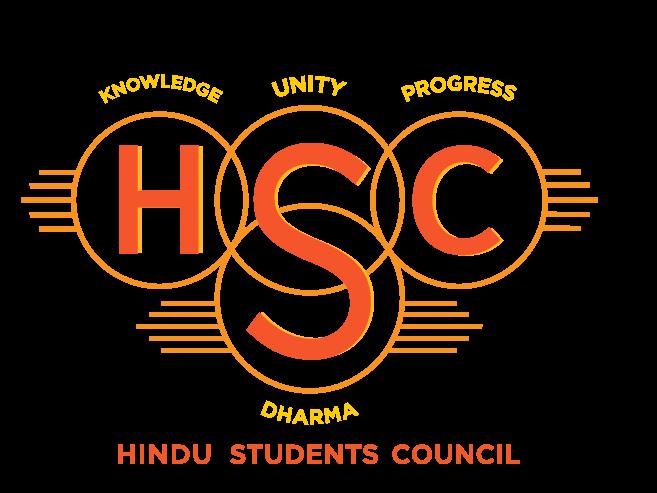
LETTER FROM THE EDITOR
Dear Readers,
Glad to see you here again. After a whirlwind of a year with many emotions up in the air, I hope you are ready to bid goodbye to this academic year. It is an issue close to my heart for it gave me a taste of everything I love- art, poetry, love-stories, and fiction. This issue highlights a myriad of emotions- happiness, anger, confusion, love, and melancholy. It is an acknowledgement of every emotion we face as human beings, and embracing the chaos of those emotions. A chaos that propels you to continue exploring everything you believe in, and every version of yourself. Our chapter has also its fair share of chaotic experiences. From choosing to write about to choosing what pose to strike during the photoshoot, each and every one was inducted into the chaos of our family.
As Asian Americans, I am sure we have had a tough time finding our identity, our niche in this ever competitive world. By taking a dive into our reflective written pieces, I hope you get a chance to introspect who you ARE. What you dream of and what your passions instill in you. Whether you choose to become a doctor or an
identity into it. We as a community will flourish, only if you keep carrying our legacy on your sleeves. Keep advocating and representing. Keep standing up for what you believe in and keep chasing the stars in the sky.
As I pen this down while looking back at the year we have had together, I have never been more proud of the people I have met along the way. My writers, designers, and photographers, you are beyond talented and kind hearted. Your spirit and excitement to create something, something we can call our own, is humbling. Thank you for allowing me to be a part of your journey to experience art in your ways. I hope I have left you wanting more of Sparks. I eagerly look forward to what you have in store for the next issue. My E-board, as always, I am grateful for your support and your patience in dealing with my over-excited ideas and initiatives. We have handled the largest staff Sparks at USF has ever seen, and I want you to pat yourself on the back for making this far. I am hopeful that our successors will only continue to expand on what we have been diligently working to build- a community, a safe-space, a platform of art and understanding what it means to be human.
It was an honor to serve as your Editor-in-Chief for the 2022-2023 year and as I put my hat down, I encourage you all to keep creating, advocating, and representing. We have many dreams to dream of with a limited life to achieve them all. That is why, I want you to be grateful to have been a part of Sparks and keep upholding our chaos high.
Represent. Be an Advocate. Make a statement.

Keep
 Sparkling, Sanikaa Thakurdesai Editor-in-Chief
Sparkling, Sanikaa Thakurdesai Editor-in-Chief

KAniz
I
photography/
Angel design/
Sanikaa Thakurdesai

TABLE OF CONTENTS THE CULTURE OF MUKBANG ASIAN DOCTORS, INVISIBLE PATIENTS THE GIRL WHO TALKED TO THE SUN EVERLASTING LOBES OF LOVE SHE & I MASALA MASALA A SPACE OF GRATITUDE THE EYEBROW AUNTIES GRECO-INDIAN AMALGAMATION GOLDEN SILENCE NOWHERE BUT EVERYWHERE STRANGERS ONCE AGAIN REDEFINING DESI MASCULINITY MISSING QUEENS BETWEEN FICTION AND REALITY FOUR SEASONS THE WAY OF THE WORLD RECONNECTING WITH CARNATIC MUSIC BHOJPURI FOLK MUSIC: A DYING SOUND IN THE DIASPORA WHO AM I?: AN EXPLORATION OF SELF-DISCOVERY SPARKS RECOMMENDS 8 10 13 16 18 22 20 30 26 28 32 34 37 38 41 42 44 46 48 24 50
The Culture of Mukbang
먹방문화
Aerial shots of a table filled with food, the camera panning over from one dish to another, a sizzling sound, an audible gasp as one lay their eyes on the amount of food.
This is mukbang.
Or at least what people perceived as mukbang
What is Mukbang?
Mukbang originated from the word 먹방 (meokbang) in Korean, meaning “eating broadcast”, which is a combination of the word “eat” or 먹자 (meokja), and “broadcast or 방송 (bangsong). It is an audiovisual broadcast, typically live-streamed or posted as a video format, where viewers can see the host eating food in large amounts, generally. Sometimes, viewers can enjoy the host preparing the food. According to Eater, mukbang gained popularity in Korea in the mid 2000-s when “enterprising food enthusiasts began broadcasting live feeds of themselves eating giant portions of top-quality beef, vegetables, and other foods”. It later gained loads of traction in the USA when the Fine Brothers uploaded a video where popular YouTube stars were reacting to popular Korean eating shows in 2015.
Why Mukbang?
Mukbang satisfies people. Among the common reasons that compelled people to watch mukbang, ASMR, or autonomous sensory meridian response, triumphs over all. For some, it is described as a “brain tingle”, according to Eater, hence why it is quite common to see mukbang hosts, or endearingly called “mukbangers” audibly stimulate viewers and listeners through slurping for example. Similarly, the one-on-one interaction emulates a simple call between friends, which helps viewers to connect with the mukbang hosts even more.
Additionally, viewers find pleasure and entertainment in seeing an abundant amount of food displayed in front of the camera. According to TODAY, a mukbang viewer mentioned that they “associate food with pleasure” and that one can “fantasize that [they] are eating it”, which helps a lot with their food consumption and diet. Similarly, seeing mukbang hosts eating vicariously allows one to feel better about themselves in comparison, according to Traci Mann, a professor of health and social psychology at the University of Minnesota. Mann suggested that since the mukbang host is doing “something worse than you would ever do,” you evidently feel better about yourself since you do not do that. Though it may sound extreme, studies like the Minnesota Starvation Study have suggested that people enjoy watching people eating or smelling food.
Health concerns in Mukbang
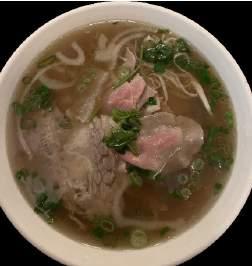
Though people do find pleasure in watching mukbang, some have criticized mukbang for instigating binge-eating and encouraging eating disorders. Erin Palinski Wade-RD said that although viewers reported that mukbang videos have helped them stay on track with their weight loss plan since their cravings are satisfied, it can trigger “disordered eating patterns in susceptible viewers”. Similarly, the mukbang hosts are
by Khoa
8 | spring 2023
“The people in these videos are doing something worse than you would ever do, and that makes you feel better about yourself in comparison,”
- Traci Mann, Professor of Health and Social Psychology at the University of Minnesota
susceptible to a lot of risks, which may include insulin resistance and increasing risk of a heart attack. As mukbang hosts can monetize their eating video, Tracy Mann also fear that their lifestyle will become unhealthy and restricted, since Korean mukbang hosts subject themselves to a strict diet and exercise regime, with Banzz, a popular Korean mukbang host, exercising for 6 to 10 hours every day, for instance.
that lives extremely far from home mukbang hosts have been amazing company whenever I have to eat alone. As I watch these videos, I feel welcomed and enticed to eat, as if I were with a friend. If anything, I feel more encouraged to eat food, which helped me developed a more positive relationship with food and a healthier outlook on eating. Though I do follow and support mukbang hosts, the expectations they set to viewers by consuming copious amounts of food and talking about weight gain and loss is extremely detrimental. It’s great if one can consume muk bang content for fun, but when it affects their eating patterns and health, it becomes an issue that one should not overlook.
Since viewers are the consumers of these mukbang videos, they are not afraid to give feedback or sometimes harsh criticism.
Mukbang YouTuber Nikocado Avocado, for example, has been heavily criticized for his eating style, his disregard for his mental and physical health and the overdramatization of his videos, utilizing dramatized titles and clickbait thumbnails, and telling hyperbolized personal stories to attract the attention of the viewers. In recent years, mukbang YouTubers have also been criticized for only presenting an abundant amount of food on the table and not eating it all, which brings up a problem about food waste and food scarcity. For instance, mukbang YouTuber Eat With Boki was criticized for spitting out her food, which caused her to close the comments section for a while in order to address the issue.


Conclusion
Mukbang, in general, has been an unending craze within our community. Personally, as a student

spring 2023 | 9
“Since viewers are essentially the consumers of these mukbang videos, they are not afraid to give feedback or sometimes harsh criticism.”
Asian Doctors, Invisible Patients
Asians and Asian Americans are a prominent cultural group as healthcare providers, but why not as patients?
“May I always act so as to preserve the finest traditions of my calling and may I long experience the joy of healing those who seek my help.” A sea of bright white coats with shining smiles looks up from their pamphlet, eyes determined but understanding of the oath they have just taken. A rite of passage for incoming medical students, the white coat ceremony is the moment I have dreamt of for years. The day I yearn to smile with pride, a culmination of the efforts of the past four years, and the beginning of the new challenges of the next four.
As an Asian American, my career path of medicine is not necessarily a novel one. Rather, many would argue it is stereotypical. While Asians make up about 7% of the United States (US) population, they constitute over 17% of current practicing physicians, and thus, Asians are considered to be the “overrepresented” minority in medicine. However, the drive to providing medical care as an Asian is met by a lack of drive to seek and receive medical care as an Asian. This situation sets up a paradox: while Asian Americans are considered “overrepresented” as medical providers, they are underrepresented as patients.
Asian Americans: The Invisible Patients
A 2021 study published in JAMA Internal Medicine found that Asians/Asian Americans lag behind in visiting 26 out of 29 medical specialties, and make up a significantly lower portion of visits in 21 of those specialties. Some examples of these specialties include pulmonology, hematology, and otolaryngology. There are a multitude of reasons as to why Asians are reluctant to seek medical care. One of the first issues that comes to mind is that of cultural competency. Language barriers, especially, prevent Asian patients from receiving optimal care and creating bonds of trust with their providers. As a volunteer at Moffitt Cancer Center, I watch a lot of patients undergo CT scans. I remember the case of a Vietnamese patient who could not speak or understand English very well. His translator could not accompany him to the CT scan because of the exposure to radiation, and the CT technologists did not know how to speak Vietnamese. During the procedure, patients are instructed to hold their breath for a certain period of time as they undergo the scan and are told when they
can release their breath. The automated scanner voice came in a variety of languages, but not Vietnamese. Without another option, the technologists just used the English voice. The patient could not follow the instructions properly and did not know when to hold his breath, which then hindered the quality of his scan. An unclear image could prevent his doctor from being able to read the scan causing them to potentially miss important insights from the image. This story is just one example of how a simple language barrier could lead to exacerbated consequences, potentially governing the difference between life and death.
Cultural competency as a whole is also important to consider when discussing sensitive issues with Asian and Asian American individuals. Taboos around mental and sexual health make it difficult for Asians to take the step towards receiving care in these areas. According to the American Psychological Association, only 8.6% of Asian Americans were found to seek mental health services, compared to 18% of the general population. An article from Pfizer states that Asians are the least likely to report having a personal or primary care doctor. Even at these primary care visits,
written by Isha Harshe design/ Isha Harshe
10 | spring 2023
many doctors fail to discuss lifestyle and mental health with their Asian patients. Primary care providers are considered the “first line of defense” when it comes to detecting medical issues - but if they are unable to pick it up in Asian patients, who will? Differences in Eastern and Western medical practice can also make it difficult for Asian patients to seek medical care in the US. Eastern practices are rooted in holistic well-being and herbal medicine. Conversely, the Western allopathic medical model, rooted in pharmaceuticals, makes many Asian families distrustful of the quality of medical care they may receive in the US.
Role of the Model Minority Myth
The model minority myth perpetuates the barriers to medical care that Asians face in the United States. The model minority myth portrays Asians to be a highly successful but politically quiet immigrant minority group, setting up high expectations that are often unachievable. This mentality also groups all Asian ethnic groups under one monolith. In fact, health disparities exist between specific Asian ethnic groups, and these tend to become masked when all Asians are grouped together. For example, according to Pfizer, U.S. born Vietnamese women are four times more likely to die of breast cancer than their other Asian counterparts. U.S. born Korean
children are four times more likely to not have medical insurance than other Asian groups. Last year, I took an Introduction to Health Disparities course, but the health disparities faced by these specific Asian groups were never mentioned. A study published in 2022 in JAMA found that Asians were often misrepresented or omitted in medical school curriculum. The study provides the example of Type 2 Diabetes, which is seen in a wide range of prevalence amongst Asian subgroups, from 12.6% in Indians to 5.6% in Chinese individuals. Despite these differences, the authors point out that there is a relative lack of specific mention of Asian Indians in medical school curriculum, furthering the perspective of Asians as mainly East Asian populations. Future doctors are not being accurately trained on how to treat specific Asian populations, despite Asians being the fastest growing minority group in the United States. Although the wide range of ethnicities that identify as Asian allow us to unite as one race, it is also important to recognize that
each Asian subgroup also has different medical needs that must be addressed by their providers.
Pass the Megaphone
If Asians and Asian Americans make up such a large part of the medical field, why are we seeing these disparities in Asians receiving medical care in the US?
Kimbell Kornu, MD, PhD, who identifies as Texan-Thai-Chinese, shares that while Asians are considered an “overrepresented” minority in medicine, we are actually quite invisible in the medical world. Our stories are not told, and thus our issues are not identified. He goes on to share his story of having a conflicted identity, being subject to racial slurs that left him feeling not quite American, but cultural and language barriers that left him feeling not quite Asian either. This is a dilemma most of us are all too familiar with. One of his main arguments in this article revealed the impact of the intersectionality between being a physician and being an Asian American. In the medical world, it is traditionally valued to be quiet in the face of conflict, to always agree to the decisions of one’s superiors, and to view resilience as the only
spring 2023 | 11
“Change starts with us having the courage to tell our stories, to own the spaces and positions that we are in.”
option in the face of hardships. These same values are upheld in most Asian cultures. Thus, when Asian Americans enter the field of medicine, these values reinforce each other as the two identities merge. We are conditioned to stay quiet in the face of our own suffering both as Asian Americans and physicians. So how can we expect our concerns to be raised? How can we expect that we will be given the attention that we need? Racial slurs and culturally insensitive comments have been a staple experiences for most Asian Americans growing up in school, and these experiences follow well into adulthood in most people’s careers. The rise in hate crimes we saw during the COVID-19 pandemic were an exacerbation of an already existing problem. However, if we don’t raise our voices against these injustices, we cannot expect a change. A
culturally competent care for Asian Americans, we must hold academic leadership positions. Change starts with us having the courage to tell our stories, to own the spaces and positions we are in. Like Kornu, we must make an effort to make the Asian American presence in medicine not just a statistic but a narrative experience worth sharing.
Bridging the Gap
As an Asian American student pursuing a career in medicine, I often felt conflicted about my career choice. I was clear in my motivations to become a physician, but unclear on how others would perceive my career choice. Do people think I am just following an expectation, a path laid before me, when the truth is that I choose to become a
family members might joke about receiving free medical care from us after we become doctors, it’s important for us to use those conversations to reinforce that we, as Asian Americans, should go see our doctors. Our presence in the medical field as Asian Americans is important in allowing Asian American patients to feel more comfortable in approaching us as their doctors. We can use our identities as a way to break down the cultural and language barriers that many Asian and Asian American patients face when trying to visit their doctors. Even though many of us have our insecurities regarding our language abilities, a familiar face can make all the difference for another Asian American patient. Having the same culture symbolizes a shared experience, a place of trust in valuing each other’s experiences and personal insecurities that may have stemmed from cultural experiences and expectations. This trust is the crutch of every patient-provider relationship, and the most sacred aspect of the medical world.
commentary from Dr. Augustine
M.K. Choi and Dr. Anil Rustgi, the deans at Weill Cornell Medicine and Columbia Vagelos College of Physicians and Surgeons, revealed that Asian Americans are not well represented in leadership and diversity efforts in academic medicine. In order to enforce changes in medical school curricula to include
physician, from my own desires? Do I have a chance to contribute anything to the medical field, when there are so many Asian American physicians already in practice? Can I still be special and leave my mark?
The truth is yes, we have our work cut out for us. While our
When I don my white coat for the first time this year, I know a complex whirlwind of emotions will overtake me. Perhaps the most prominent emotion will be that of responsibility. The white coat is a symbol of the trust patients will put in me for their most valuable possession: their life. And the undertaking of that responsibility, for all lives, is what unites us as doctors. So to my fellow and future Asian American doctors: let’s roll up our sleeves, snap on those gloves, and hold our heads up high because we’ve got lives to save.
12 | spring 2023
“We are conditioned to stay quiet in the face of our own suffering both as Asian Americans and as physicians.”
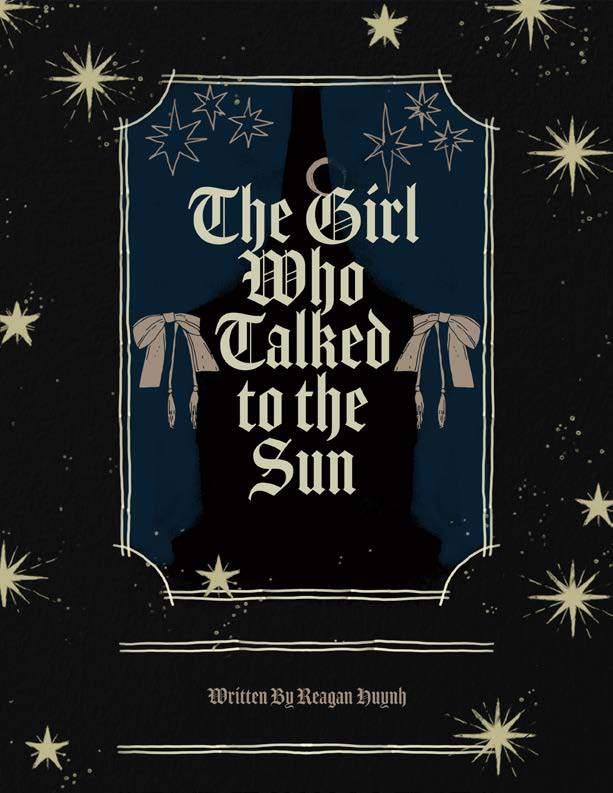
spring 2023 | 13




14 | spring 2023
the Girl said, “who loves me so much. Who my family is thankful for. Who helped raise me up.” And then her friends noticed the Girl’s skin was dark. Which doesn’t really matter, but that’s how kids are. It made the Girl feel sad, like she didn’t belong. She didn’t know why she was different. She asked her dad, “Why?” To this question her dad replied, “We aren’t from here like your friends are. We came here because we followed the Sun. So, you speak differently and eat different foods. Because you’re not from here you look different too. But that is ok. It’s what makes us unique. To be a part of this land and a part of the Sun is so special and should be cherished down deep.” But the Girl didn’t think so. She wanted to blend in. She copied her friends and the things that they did.


Fall turned into winter. Clouds covered the Sun. She set much earlier, before the day was even done. The air was cold. It nipped at the Girl’s skin. Her nose became red and so did her chin. The Girl could not feel the Sun on her face. Instead, she felt wind and snow all over the


The Woman was sad. She had lost her way. She’d followed her friends who had left her behind. By doing that, she lost who she was the whole time. After many many years, she finally sat under the Sun. Feeling the Sun’s familiar kiss and comforting way, the Woman began to apologize for all the lost years. The Sun was not responding. The Girl thought she could not hear. And then the Woman realized one of her fears. After years without talking and prancing under her light, the Woman lost the Sun’s language. It gave her a fright. But the Sun still loved the Woman, this could not be undone. The Sun smiled down and the Woman felt her warmth. Her heart once again felt the Sun’s joy. The Woman remembered who she

spring 2023 | 15
She held my hand close, but then let it go. She let me go.



I looked deeply into those eyes of hers, she whispered “I will be back soon enough for you not to miss me … I promise.’’





 by Alphy Maria Antony
by Alphy Maria Antony
18 | spring 2023
design/Daniela Kate Abaquita
& I
She and I, we laughed.
“The prettiest bride I have seen,” she said with starry eyes. Walking down the aisle, we held each other’s hands.
I looked down deeply into her colorful irises, she whispered
“I have to let you go, but I will always be there … I promise.”
She soared up high. Alone this time.
Amongst the many sparkles in the sky, I saw the binary stars.
















This time I screamed in tears, to the winds and clouds, hoping she would hear me. “We will always be together … I promise “
I cried, she laughed. That was the bittersweet truth. Wickedness of life, I thought. But, a mystery still remains. She kept all her promises …did I?
But she and I aren’t a mystery, she was my first love. She was my mother.
spring 2023 | 19
Masala Masala
ThePerfectBlendofPunjabiSpicewithAmericanSeasoning
Masala
A blend of spices that are essential to add life and flavor to food. Masala is what allows unique aromas to dance and spin, cultivating the taste of life. Growing up, I always considered myself similar to the meaning of masala. My Punjabi culture cultivated my upbringing at home, but American society cultivated my education at school. I chose Punjabi spices and mixed it with American seasoning to create my metaphorical masala of culture and ethics. My morals, values, and understanding of the world were a combination of the two cultures I’ve been exposed to.
Every spice brings a new richness to the flavor and as I lived and learned among my surroundings, I added on new spices to enrich my knowledge of society and dynamics. From playing in the streets of a bustling diverse city in California to playing by myself in a small Floridian suburb, each new experience added a flavor.
Elaichi
(Cardamom-aspicethatremindsmeofawarm houseonacoldwindyday;safe,secureandfilledwith love.)

Warmth is what I felt in California. Apart from the sunshine of San Francisco I remember the tenderness and affection of the bustling city. Hugs from countless relatives, laughter floating from one room to another in the house we shared, and the feeling of contentment. Strangers at parks became best friends in seconds, playing mermaids and pretending to rule the playground. Gymnastics, ice skating, taekwondo, and barbies predominated my time.
I fondly recollect the warmth of coming home as a feeling of comfort and a sense of belonging. Every day was filled with warmth and sweetness reminding me of the aromatics in elaichi. Filled with diversity and acceptance, California allowed me to thrive in a shared space where I could be proud of my culture and share it with classmates, neighbors and friends. Friends awed at my homemade lunches and we shared a collective respect for everyone’s ethnic food. California sprinkled elaichi in my masala and became the base of my cultural roots.
MIX
Haldi
(Tumeric- aspicethatremindsmeofanewadventure;somethingdifferent,ambiguous,andnerve wracking)




New eras and new beginnings. Suburban life was much quieter, much softer than the bustle of the city, and so I inadvertently began to reflect on my surroundings. Quietly and shyly I made friends with my new neighbors and schoolmates. I learned to be more self reliant and channeled my energy into new fortakings. Painting, writing, and music became my softer approaches to spending time. Moving to Florida brought a new self awareness. I went from living in a diverse community to feeling ostracized for being the only person of color in my class. Subconsciously I was always aware of how many other people of color were at my school.
by Nimrit Doad art and design/Nimrit Doad
20 | spring 2023
It was in this time of critical growth that I adapted to American culture the most. I didn’t have any friends who shared similar home dynamics or cultures. I felt out of place, too different, too weird to be fully integrated into this society. Too Indian for one group, too American for another group. It was difficult to find happiness in between. Finding a balance and creating a dish in a kitchen that was not prepared for me proved to be more difficult than expected. I had to tailor my “seasonings” to fit the taste palette of the masses. It wasn’t until I was in college, when I fully began to embrace my roots and integrate the plethora of Punjabi spices in my own masala.
Nimrit’s masala
(AblendofexperiencesthathasmademethepersonIamtoday;strong,independent,andembracingallpartsofme)
(Cumin-aspicethatremindsmeofahome;aplace whereIcancomfortablegrow,learn,andthrive)




Togetherness. A simple word whose meaning lies intertwined in layers. A mixture of who I was and who I am today. Meeting new people in college drastically altered my perspective. I now was in an environment that treated multiple cultures as not being two separate dishes, but now as a combined fusion cuisine. I met so many people who were just like me and I was able to create this space of conversation over our similar experiences. College created an environment where I was able to collaborate and gain confidence in myself to embrace all aspects of my upbringing. It was in this environment where I envied those that had a sense of pride in both their ethnic culture and the American culture. While I had always hid a part of me to “fit in”, my new environment taught me to break the mold. This new sense of belonging, a sense of “home” is where I thrive. Surrounded by like minded people exploring their own masalas and learning to craft a flavor to enrich their lives, regardless of what anyone says.
Exposing myself to the community that surrounds me, empowers me, and pushes me to embrace the beauty of both cultures. Immersing myself in the flavors of my heritage and embracing the lessons it has taught me. I no longer felt obligated to choose between my roots and the society I was brought up in. I felt worthy of my masala and took gratitude in its reappearance. I became proud of my culture, proud of my upbringing and proud of myself for undertaking the challenge to make a space in the kitchen we call society. My masala is inherently unique to my inner struggles of a societal sense of belonging, making it all the more precious to me. Through the years of careful crafting, I’ve blended each spice with grace and passion, weaving new lessons into every batch. Even if fate grants me a million lives, I would still dedicate each one to creating my masala.
Jeera
spring 2023 | 21
MIX
A Space For Gratitude

Dear mẹ,
I come home to an empty room, sometimes with a cold heart and a stomach almost bursting with thoughts and emotions. Internalized.


Before feelings of loneliness could sink in, I open my laptop, and there you are. Just a click away.


Despite being exhausted from your busy schedule of teaching and talking all day, you smile the warmest smile at me. You sit through hours of complaints and complex emotions before calmly giving me the most heart-warming words of encouragement.
In a world often too deafeningly loud and suffocating at times, you make me feel heard and loved. A foreigner to this land, conversations could sometimes be so hard to keep up with due to language barriers that I almost always resort to silence. Yet with you, I feel safe enough to share my voice and express myself fully.
My heart is at peace when I’m with you, mom.
artwork byNaveenAmreen
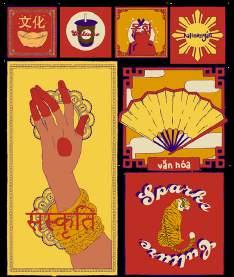

Dear Sparks,
In the world of Marketing, we often speak about how to make our audience feel seen. When creating content, this is known to be unanimous amongst all industry professionals. As a marketing professional myself, this is also one of the elements I engage most deeply with. Yet somehow, stepping foot in the U.S., I could never see myself in anything happening around me. Not in the newspapers. Not on any billboards. Not on the web.
Not until I picked up my first Sparks Magazine issue. Sparks pats me on the back for my hard work. Sparks shares with me the stories and the utmost desire to feel like I belong. Sparks celebrates my culture. Sparks boldly showcases aspects of myself that I more often than not concealed for fear of not fitting in, instilling a sense of courage to speak my truth.
Here, I came into a world full of kind and passionate people, which I now proudly call my home away from home. At Sparks, I am heard.
College life wouldn’t be the same without you, Sparks.
by Quyen Tran design/ Riya Choksi photography/ Khoa Hoang
mẹ /mɜ/ n. mother
(inVietnamese)
22 | spring 2023
Dear ba,
As an admittedly dramatic person with a lot of heartbreak, I often find myself caught up in my own complaints and forget to appreciate the blessings in my life.
I was complaining as usual the other day, when my dad looked me in the eyes and said, “It’s easy to get so focused on your own goals and problems that you forget to stop and appreciate the simple beauty that surrounds you every day - the trees, the clouds, and the sunlight. These are the things that make your life truly fulfilling. Sometimes, it’s all about closing the doors to those ugly voices inside your head, taking a break from worrying and looking around you. You might be surprised by how much good is right in front of you, and has been waiting for your discovery all along.”
“Be present, my dear,” he smiled.



I couldn’t imagine a life without you, dad. ba/bæ/n.father(inVietnamese)




Dear America,
I planted an onion tree with pots left behind by the previous renters. They were full of spider webs and covered in dust. After a week or two, a chili tree and a pot of lush tomato plants started growing alongside it. There, a garden came to life right at my doorstep.
Now, I take a few minutes every day to observe them. They’ve grown from tiny seeds into beautiful trees. I’ve learned to take care of them with patience and observation. Hotter days call for a bit more water, while rainy days mean rushing home from the bus to bring all the pots inside.
Just like my dad taught me.
Watching my plants grow reminds me to appreciate the trees, sunlight, and clouds around me. I talk about my garden with mom in my free time and journal frequently about my journey in America for Sparks.
Each and every fabric of life in America harmoniously weaves into each other to water the plants of hopes and dreams within me. Just like that, the plant in me joins the garden out the doorstep in my journey of growing up in my home away from home.
Thanks for being the dream, America.

spring 2023 | 23
very few weeks, a couple of bushy caterpillars start setting up shop on my forehead and I know it’s time to visit my favorite place in town. There are very few people on this planet who can wrangle my thick Indian hair, but my eyebrow lady knows how to do it best.
The tradition of going to the eyebrow lady was passed down to me by my mother and my grandmother. They were the ones who first took me along to an aunties house or a beauty parlor. Even as a child, I could recognize that this was a special event. As I grew older and my hair started growing thicker, I realized I might have to start sitting in the chair as well. My mother took me to her friend and guided me through the process, and the unexpected pain. It was a coming-of-age ritual that none of my friends had. While that was slightly isolating, I felt as if I was entering into a very different community, one that so many women of my kind had gone through. This initiation into a different world was exciting and new, and a little painful.
From then on, every few months, I would go to the auntie with gentle hands and fight back tears from the stinging feeling as she ripped a couple of stray hairs out with tweezers. Every trip the pain became more bearable, and the results were more worth it. I also realized the salon was a hub for women in my community. I noticed that if I


listened close enough, I could pick up conversations and bits of knowledge from women older and wiser than me. They talked about their lives, both the big things and the small ones. I learned about their everyday schedules, daily hassles, and how they balance their work with their responsibilities to their families. In their idle chatter, I listened in on how they must take care of sick kids and ask husbands to bring home the right kind of medicine all at the same time. I learned about how they hold their homes together with their knowledge, experience, and most of all, instinct. They talk about their days as young women, how they navigated their times in school and university, and how they built their lives. By listening to them, I gained perspective on girlhood and womanhood, something that is so unique to women from each community. It dawned on me that although I am a first-generation South Asian girl, if not for these ladies, I might have never had a chance to experience this sense of community. ,
The South Asian community in America is relatively new, with the immigration pathways opening up in the 60s and 70s, much later than for other groups. Immigrants, and especially South Asians, have the unique experience of not having an old and established community in
by
Aditi Dhruve design/Sana Lulu
Ethe nations we now reside in. With these circumstances, immigrants take advantage of the “land of opportunity” they’ve moved their lives to and start businesses. South Asian women are no exception. Many eyebrow ladies are simply mothers and wives who are trying to maintain their homes and lives in a new country while providing for their families. Some may still be learning the language and adapting to cultural changes. Many don’t have advanced degrees which could correlate to a wellpaying job, and some simply do not have the capacity or desire to work a 9-5 job. Setting up shop in a beauty salon or their own homes, is one way these women can transcend their difficulties and create something of their own. With businesses like eyebrow threading or giving facials, they tapped into a niche that was yet unexplored in the United States for South Asians. There was an influx of women from the region, and there was a gap in services that these entrepreneurial women stepped in to fill. Nowadays, South Asian women take for granted that there will be some auntie who understands their standards of beauty and can provide a service that fits them. The entrepreneurial spirit of so many South Asian women was able to shine through as a result of these businesses. Many of these women now have large operations, employing other women or renting out chairs and treatment rooms to help other women start their journeys as aestheticians. This niche 24 | spring 2023
has exploded into a lucrative business where South Asian women are at the helm. Women have made a space for themselves to become self sufficient as business owners, and with this they have also helped uplift other women alongside them. Nowadays, I go to the beauty salon on my days off from school. It’s my personal ritual to see my girl Sana, who always lectures me about how bad my brows have gotten and how much I need to see her more often. She and I have been through a multitude of bad brow days, tough hairs to pluck, and of course more than a few tears in the corner of my eyes from the pain.
people all around me, they’re the connection to my culture.. They’re hard-working women who have kept South Asian femininity alive outside of the subcontinent and kept a space for women to build community and friendship. Whenever I go to the salon I enter a different world, and it feels like a place where no matter what, I know that I will be accepted and taken care of. The atmosphere is light-hearted and the gossip flows freely, in so many languages and dialects. There, a sense of belonging resides, and this makes for an experience unlike anything else.


However, it’s not just the service I’m looking for. It’s my monthly connection to the women who know me in a way that isn’t often acknowledged outside of the salon. Having not grown up with my spring 2023 | 25
Alexander the Great’s Incursion into India

Ihave been a lover of Greek mythology since I first read Percy Jackson in the fifth grade. I was enthralled by Greek mythology with its vengeful gods, tragic heroes and bloodthirsty demons. Imagine my surprise when my mother flipped through her Indian channels and stopped on a somber scene of a chained Indian King in front of a golden-armored Greek warrior. My interest piqued, I threw out a hand when she went to flip to the next channel.
As I watched, I discovered that the Greek warrior dressed in gold and walking with a commanding air was none other than Alexander the Great- a conqueror glorified in the history books. A Macedonian King, a student of the legendaryphilosopher Aristotle, and the Emperor of one of the most expansive empires in history.


For me, India and Greece are an unexpected pairing. In my mind, the two countries were geographically so far apart, I never expected my home country and a country I admired to ever clash. I came to know that Alexander the Great’s last battle was actually in India with King Porus, the chained king in front of him in the Indian show. Historically, the Battle of Jhelum/Hyspades was one of Alexander’s most costly battles.
I later learned that after Alexander defeated King Porus, Alexander planned to cross the Beas River to continue his conquest into mainland India. However, his troops were reluctant to continue conquering after seeing the strength of King Porus and his troops and their unwillingness to surrender. According to the Greek’s sources, if the army crossed the river to mainland India, they expected to fight the Nanda Empire, with an army five times
the size of the Macedonian army. Alexander’s troops mutinied before the crossing of the Beas river and Alexander was forced to retreat in 324 BCE.
However, Alexander left many satraps, or ruling Generals, who governed various parts of India. He established the city of Alexandria Bucephalus in India, in loving memory of his trusty horse, Bucephalus, who perished at the Battle of the Jhelum. Alexander fell ill and passed away on his trip back to Macedonia and his empire split into numerous ruling satraps. His short encounter with the Indian subcontinent left many lasting traces. This is seen in the cultural syncretism of Greece and India during the Greco-Indian empires that rose and fell after his reign.
written by / Serena Bhaskar design/Serena Bhaskar, Sanikaa Thakurdesai
26 | spring 2023
The Cultural Syncretism of India and Greece

Gandhara Art or Greco-Buddhist Art along with an interest in mythology, I also have a fond interest in art history after taking a class in high school. I was pleasantly surprised to learn of an art style I had not heard of in my studies. When Alexander the Great conquered the Western region of India, his succeeding Generals and Indo-Greek kingdoms introduced the western tradition and form of Hellenistic art styles. Soon after, the Gandhara art style slowly emerged during the Kushan empire with a unique synthesis of the Hellenistic tradition with the local Buddhist iconography. The art style ended the early period of aniconism in Buddhism and produced the first forms of Gautama Buddha in human form. Emperor Kanishka greatly supported the Gandhara school of art which incorporated many Hellenistic motifs and techniques such as sensuous figures with idealistic figures inhimations with realistic draping and folds.
Greco-Roman symbols such as vine scrolls, cherubs bearing garlands, tritons, and centaurs also emerged in the Gandhara region, a crossroads of cultural

influences.
Greco-Buddhism in the East
During the reign of the Kushan
Road. This allowed for the transmission of Mahayana Buddhism from Gandhara across the Karakoram range to China.The public aniconism of these statues coupled with Buddhist missionaries and translators made Buddhism very accessible to the public.
Emperor Kanishka, Gandhara became the scene of intensive Buddhist missionary activity as well. Kanishka’s coins portray images of Indian, Greek, Iranian divinities, demonstrating the religious syncretism in his beliefs and the empire.The Emperor’s conquests and patronage of Buddhism played an important role in the development of the Silk
Greco-Indian culture syncretism was influential for the next several centuries as seen in ancient coinage, languages, and pillar and temple architecture. Many collections of Gandhara art styles are available to view in museums today. The Metropolitan Museum of Art in New York specifically has a wide collection of South Asian art including Greco-Indian artifacts. These artifacts include Kanishka’s coins, Buddhist figures, and temple artifacts, which I hope I can see one day. The amalgamation of Indian and Greek culture has led to noteworthy pieces of art, culture, and language that influenced the tides of history. The fascinating and unexpected synergy of ancient India and Greece should be one discussed more often in the history books.
spring 2023 | 27
Indian households hold approximately 25,000 tonnes of gold, much of which is passed down through generations.

From the birth of a girl, gold inheritance plays a huge role in many Indian rituals, such as cradle ceremonies (performed 2 weeks after the birth to signify the baby’s independence from the mother), puberty ceremonies (celebrating a girl’s coming of age), weddings, and even birthdays. Dowries are the main source of gold inheritance, as weddings are the primary ritual where gold gets handed down from one generation to another.

In today’s society, as women have gained more independence, financial autonomy, and freedom, gold is seen more as a symbol of wealth. But even though gold signified wealth in the past, in many rural areas of India, gold was often the only financial protection women had in their hands. Going back all the way to when the British colonized India, women were not allowed to own any property. All property was written under her husband’s family. Men were seen as the financial heads of the house.
Society often patronized women as housewives, restricting women to taking care of the house, family, and children, thus preventing them from working or earning any money. And for the inadequate number of women who did work outside the house and earned money, their earnings were managed by their husbands. All these practices made it easy to take advantage of vulnerable women.
Thus, receiving gold became a hidden way to stay strong while enduring inequalities. From their daughter’s birth, mothers take great effort to collect bits and pieces of gold, from gold coins to jewelry such as necklaces, bangles, to anklets, and waist bands.
So why are we obsessed with adorning every part of our body that can carry the weight?
The truth is that adorning themselves with gold not only showed their wealth, but their greater treasure - the financial independence they gain in a day where women are still restricted, taken advantage of, and seen as vulnerable.
28 | spring 2023
by Yasaswi Nimmagadda design/ Merita Thomas
With every piece of gold a mother collects, she is building safety and freedom for herself and her children. Their gold is later passed down to their daughters as a symbol of continued support and care as they leave the comfort of their home. So every time your uncle, aunt, or grandparents present you with gold jewelry, it is their love in the form of protection. And as a bride begins her own families, the cycle repeats again as these brides become mothers.
However, in today’s evolving society, gold has become an heirloom rather than a financial means to an end. As women have gained more freedom, the increasing number of earning women has allowed access to proper financial education. We can now invest into modern financial resources such as mutual funds, stocks investments, and property. Women can now choose to use their earnings to invest in gold as a symbol of their wealth.
While the gold we now hold has its own value, continuing to collect and pass it down as our only means to financial independence stumps our growth. It keeps us in the past.
As we continue towards equality, I believe women should invest in modern financial means for a brighter future. Our ancestors fought for our voice and individuality, they fought for the lives we now live. Practicing modern financial autonomy only pushes us closer towards equality, strengthens our future, and gives meaning to our ancestors’ actions.
Women once used gold as their only financial safety net, but as we have more freedom, I believe we should teach our future generations, our daughters, about modern financial practices. We need to learn to earn our own money and to handle and invest our income to secure our futures.
In this day and age, I believe gold should be carried as an heirloom, worn as a memory, as a symbol of change in society instead of discontinuing the tradition.
Because when we look at old photographs, read history books, we will see that gold inheritance shines in South Asian history as one of the many beautiful traditions that marked our uniqueness.

spring 2023 | 29
What next, where will you end up, Never-ending questioning. what next, Frustration builds-up, if the answer isn’t reasoning. What next, where will you end up?
Never enough, if passion’s unstable. If dreams don’t serve on a gold platter, never enough. Emotions disable, it’s better to have a ground than shatter. Never enough, if passion’s unstable.
 by/ Merita Thomas design/
by/ Merita Thomas design/
30 | spring 2023
Merita Thomas
I’m here and there, I’m everywhere.

Have a job and a flat and a car as a fact! I’m here and there, but unaware.
If checking boxes makes happiness last, I’m here and there, I’m everywhere.
spring 2023 | 31
Strangers Once Again...
Monday morning hits with a pit filled with butterflies and a clouded mind. I didn’t know what the upcoming semester held at the University of Chicago but I needed a fresh start. The butterflies eased as I walked to class with my headphones on, listening to my favorite music. As I steadily paced, my eyes caught sight of a familiar face, smiling in my direction. Aditya Tota? The man that expected me to complete most of our biology experiment senior year. The man who always teased me during my senior year of high school was walking toward me. I froze in shock.
“Hi Suhana,” he spoke in his deep voice.

“Hi”


“How have you been?”
“I’m good, surprised to see you here.”
“Same here. You look different, a good different.”
“Thanks, Aditya.”
“Anyway, I hope you’re coming to the ISA club meeting, Suhana.” I heard him say as I passed him and nodded in return. I couldn’t stop smiling after he was no longer in sight. What was wrong with me?
I walked through the double brown doors of the ballroom, scanning the room until my eyes stopped at the boy in the relaxed-fit jeans and a black tee. With one look, he was headed my way.
“I was beginning to lose hope.”
“Why?” I frown.
“Because I thought my favorite person wasn’t going to show up.”
“Nice to see you too, Mr. Aditya,” I smirked.
I followed him toward his group of friends and then, he introduced me to everyone. I learned we were all on the same pre-med path as we talked about our majors, classes, and future goals. It was nice meeting people from different cultural backgrounds. I mentally checked the box of meeting good people on campus. I had hope for this semester.
The meeting quickly came to an end and we all said our goodbyes. The room emptied and the chatter dissipated. I hugged my last friend bye in the hopes of seeing them soon. I turned to see who remained, hoping he was still there. I felt a hand tap my shoulder and I turned. Was he waiting for me to finish talking to my friends?
He insisted on walking me to the car. The moon gleamed over our heads as we walked in silence. I felt safe in his presence. We reached my car and still had no words to say to one another.
“Thank you for walking me to my car, Aditya.”
“Of course, I couldn’t let my favorite person get kidnapped.”
I giggled.
“Would you..umm…like to grab dinner sometime?”
“Yea,I would love to.”
He scratched the back of his head and smirked. “Alright, I’ll text you.”
I popped into my car and I squealed with a massive smile on my face.
The day had finally arrived. I paced my floor, feeling the heat against my feet as I waited for his text. The butterflies had begun to flutter faster by the minute. “Calm down, and take deep breaths,” I reminded myself. I walked over to my standing mirror, scanning the black midi dress that hugged me in all the right places. The look was all tied together with my favorite black jhumkas (Indian earrings). I ran my fingers through my hair once more, ensuring the curly strands lay perfectly over my shoulder. As I checked over my appearance, I couldn’t help but think what my parents would think if I was dating a nonGujarati boy. They were never fond of the idea of me dating a South Indian guy. It was a risk I was willing to take because I liked Aditya. “Ding” I heard, popping me out of my bubble. I reached over to see his name appear on my screen. He was here.
I clasped my keys and headed downstairs in the hope I was taking a good risk. I’d never want to disappoint my parents but “dil toh pagal hai” (the heart wants what it wants). I pushed my dilemma to the side, focusing on the headlights that appeared from the distance. He parked the car and walked over to the passenger side. A whirlwind of emotions threw me in a loop as I saw the bouquet of roses on the seat. I looked over at him in admiration. We drove to the restaurant with music filling the empty space and calming our nerves. Once we got to the restaurant, the conversation began to flow again and flirty Aditya was back. I liked when he was playful because I got to catch a glimpse of his smile. We both laughed and laughed on our way back to my place. As he pulled into the lot and parked, he insisted on walking me to my door. A few flights of stairs later he reached my door.
“So this is me,” I said “I had a really great time tonight,” he said as he took a step towards me, staring deep into my eyes.
“Aren’t you glad you had great company,” I said with a smirk on my face.
He inched closer. “I don’t know if I would agree with that, she was alright.”
I jokingly got upset and walked to my door. Suddenly, I was whipped around in front of him. I could feel his hot breath on my face and his hands were on my hips.
by Krisha Patel design by Nistha Sevak
32 | spring 2023
I jokingly got upset and walked to my door. Suddenly, I was whipped around in front of him.
“Where do you think you are going, Suhana?”
“Home because someone doesn’t like me.”
“I can’t begin to tell you how much I like you,” planting a kiss on my forehead and my cheek. I felt myself melting into his arms.
“Alright, Mr. Aditya. That’s all you get for now,” pushing myself away from him.
“Sleep well, Suhana,” he said with sad puppy eyes. “Goodnight, Aditya. Text me when you get home,” as I shut the door.
A few dates later, life had been feeling like a fairytale. I reached for my phone to see that Aditya had texted me to check my front door. I opened the front door to a bouquet of red roses and a white envelope that said “Suhana.” I grabbed the bouquet and placed it in a vase filled with clean water. I sat down on the couch and folded my legs. I peeled the envelope carefully and pulled the letter out. “Suhana, will you be my girlfriend?” I grabbed my phone and texted Aditya “I thought you would never ask.” He typed a message back saying “I had to make sure you knew what you were signing up for. Now, you are stuck with me.” I texted back “I wouldn’t have it any other way.” All thoughts of hesitancy had disappeared.
Weeks go by and I’m still overwhelmed with academics. Aditya has been asking if I told my parents and the answer still remained the same. I could feel him getting annoyed and I knew I could no longer hide my relationship from my parents. I decided to shoot them a text about setting up a FaceTime call later in the evening. I rather feel their unexpected wrath through a FaceTime call than in person.
It was 8 o’clock and I sat with butterflies as I waited for them to call. My screen brightened with the name “Dad.” The call started off as normal with them asking about my grades and academics. It was their way of checking how I was doing. Not the most comforting but I understood their underlying message. I knew I can no longer prolong, so I began with the classic, “I have to tell you something.”
“What is it, beta (loving way of saying child)?”
“I have a boyfriend and his name is Aditya.”
That one statement raised numerous questions. “How long?” “What is his major?” “How old is he?” “What is his religion?” They wanted to know his entire history. I patiently answered them all, dreading the one question. Until my dad finally asked.
“Where is he from?”
“He’s Telugu.”
“Suhana, are you serious?” Dad said “Mum and Dad, I really like him. Just meet him please.”
“We will need time to think about it. For now, keep your distance from him” Mum spoke sternly.
“You need to focus on your career and he’s not the right man for you,” Dad said.
“Just meet him, please. He’s nice and cultured.”
“He’s not Gujarati,” Dad said.
“I’ll teach him and you can meet him in a few weeks. If you still don’t like him, I will end it.”
They both agreed, so I considered the FaceTime call to be somewhat productive.
For the next few weeks, I helped Aditya learn Gujarati and its culture. Weekdays were spent on classes and weekends were spent teaching Aditya Gujarati.

The day had finally arrived. Aditya was meeting my parents for dinner. I showered, applied my make-up, and wore my most conservative dress. I looked at the clock and Aditya still hadn’t come. I decided to call him.


“Hey, where are you?”
“Hanging out with the boys.”
“Aditya, how could you forget about the dinner with my parents today,” I said with annoyance.
“You never confirmed the days with me.”
“Yes, I did. A week ago.” I felt my blood begin to boil.
“It doesn’t matter now. I’m busy now. You go ahead.” He said without any guilt.
“Fine,” I yelled and ended the call.
I had to call my parents to notify them that Aditya had an “emergency” and couldn’t make it. During dinner, mum pointed out how I seemed distracted but I brushed it off with a smile. I kept running my last conversation in my head during dinner. After hugging my parents goodbye, I decided to call Aditya. No response. I suppressed my anger.
I came home to Aditya sitting at the table, unbothered. I forgot he had a copy of my apartment keys.
“How could you, Aditya?”
“It’s not that big of a deal. It was only one dinner. Relax.”
“You don’t understand, Aditya.”
“Suhana, why do you have to argue with me on every matter?”
“I have expectations for you. I needed you to meet my parents.”
“Is everything always about you and your life?”
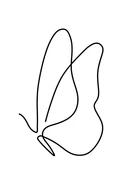
“I wanted to introduce you to my parents. I guess this relationship isn’t important to you.”
“It’s not that deep. I can meet them another time.” “There won’t be another time. We’re done.” I quickly realized what I’d said. It’s too late now.
“I think it’s better that way.”
He grabbed his car keys and wallet from the counter, storming past me. I heard the door slam in the background. I slid my back down the wall unable to hold the tears in my eyes. How can a person like me be fooled? I never broke my high walls for anyone. Now, I sat with a wall that was halfbuilt, no longer providing the same protection as before. I should not have been swayed by his sweet words from the beginning. Nothing but just empty promises.
spring 2023 | 33
Music and Redefining Pakistani Masculinity
The recent rap music that has emerged from Pakistan has focused on typical, hyper-masculine themes like relationships, alpha-male bragging, drugs, and gross objectification of women. There is also a growing trend for diss tracks and rap battles be tween artists. Additionally, the sta tus quo when it comes to Urdu HipHop has evolved to a style of music that is rather “Americanized.” At the forefront of this style of rap mu sic is the popular Karachiite HipHop duo, Young Stunners. When I introduced Young Stunners to one of my American friends, he was surprised by how similar it was to American Hip-Hop. It is also interesting to note that the style of Urdu Rap/ Hip-Hop popularized by Young Stunners contains a lot of English lyrics and pop culture references. In con trast, Sunny Khan Durra ni introduces a different style of Urdu music that is not as westernized as the typical Pakistani rap music, and is pro foundly lyrical. In Sun ny Khan Durrani’s songs, he does not use any En glish words or pop culture references. By directing his music to voice the countless cultural and social problems that torment Pakistani society, Sunny Khan Durrani breaks the mold and brings a unique style to the landscape of popular Urdu Hip-Hop. He redefines many ideas that form the basis of Pakistani cultural, religious, and social practices as well as the ideologies that underpin them. One of the ideologies that he tackles is the perception of masculinity within the cultural terrain. La Haasil is the perfect song to understand the
power of his music. In La Haasil, he lays bare the most painful emotions that plague him, and in doing so he paints a very accurate picture of the infinitude of problems rooted in cultural, religious and so-

monic narratives. For example, La Haasil demonstrates his poetic framing of the emotional struggles he faces as well as challenges the idea that men are supposed to be “stoic” and shy away from any healthy expressions of emotion.

Lyricism
In one verse, Sunny Khan Durra-
ni says, “Kaash saans le sakte doob ke, to aaj mera dost kamran hota sath mein - I wish people could breath while drowning, then my friend Kamran would still be with me” This verse never fails to move me because he says that he wishes people could breath while drowning. Although he says this to grieve for his friend who drowned, it also relates to how he wishes people like him who have witnessed severe traumatic events could breathe and find happiness despite drowning in their sorrows. In another verse he says, “Kaash ke mein likh pata kaya he kahani. - I wish I could write this story.” However, he juxtaposes “Kahani’’ with “Kaha Nahi”. The former means “story” and the latter means “unsaid.” The two words sound very similar, making this an impactful juxtaposition. He wishes he could express the true depth of his emotions and pen his entire story, but the pain of it all bars him from doing so. Although the song sounds gloomy, it also contains within the word “Kaash,” a glimmer of hope. He could not have chosen a better word to express his yearning for his wish to go back to times when he was not afflicted with all the traumatic events he describes. It is this hope that things will resolve in the distant future that enables him to acknowledge all of his buried agony. However, this is where the listener is empowered through La Haasil. This is because listeners find themselves within these lines. It is not only Durrani voicing himself, but establishing this emotional connection to his listeners that challenges the limited emo-
Written By Abdul Moeed Zahid Design
34 | spring 2023
By Amreen Naveen
tional connectivity among men and the stigma associated with it. By understanding his emotions and being vulnerable, he battles the cultural expectations that were detrimental to his confidence - the socio-cultural values that stigmatize mental health for men, and the heavy expectations that put them in caretaker roles at a young age.
Challenging cultural ste reotypes
More often than not, the relation ship between a father and son is besmirched by negative cultural ideas in the South-Asian communi ty. In an ideal relationship, the father serves as a role mod el for his son and helps his son mature and adjust to a brutal world. But when men are ‘told’ to keep them selves in check, and not show any emotion, this relationship is strained. These heavy expectations placed on any individual has a detrimental effect and limits their emotion al growth. Sunny Khan Durrani challenges these harmful norms by expressing his angst to his father, and to all of us. De spite doing all that Durrani can, through his song, he ex presses that he still feels like he could not be a good son because he could not fulfill the dreams his parents had for him. He affirms to have been deprived of internal validation. In this song, Durrani is expressing all the pent-up sorrows, hoping he will figure himself out.
Writing and singing La Haasil was cathartic for him. He stated in an interview, “I was at my lowest when I decided to write this track and I had no idea this song would go so
far and it would build such a connection with people. I was literally crying when I wrote it and during recording that can be heard at certain points.” This song also points out how such expectations have tremendous adverse effects on a young person’s identity and confidence, especially young men. By
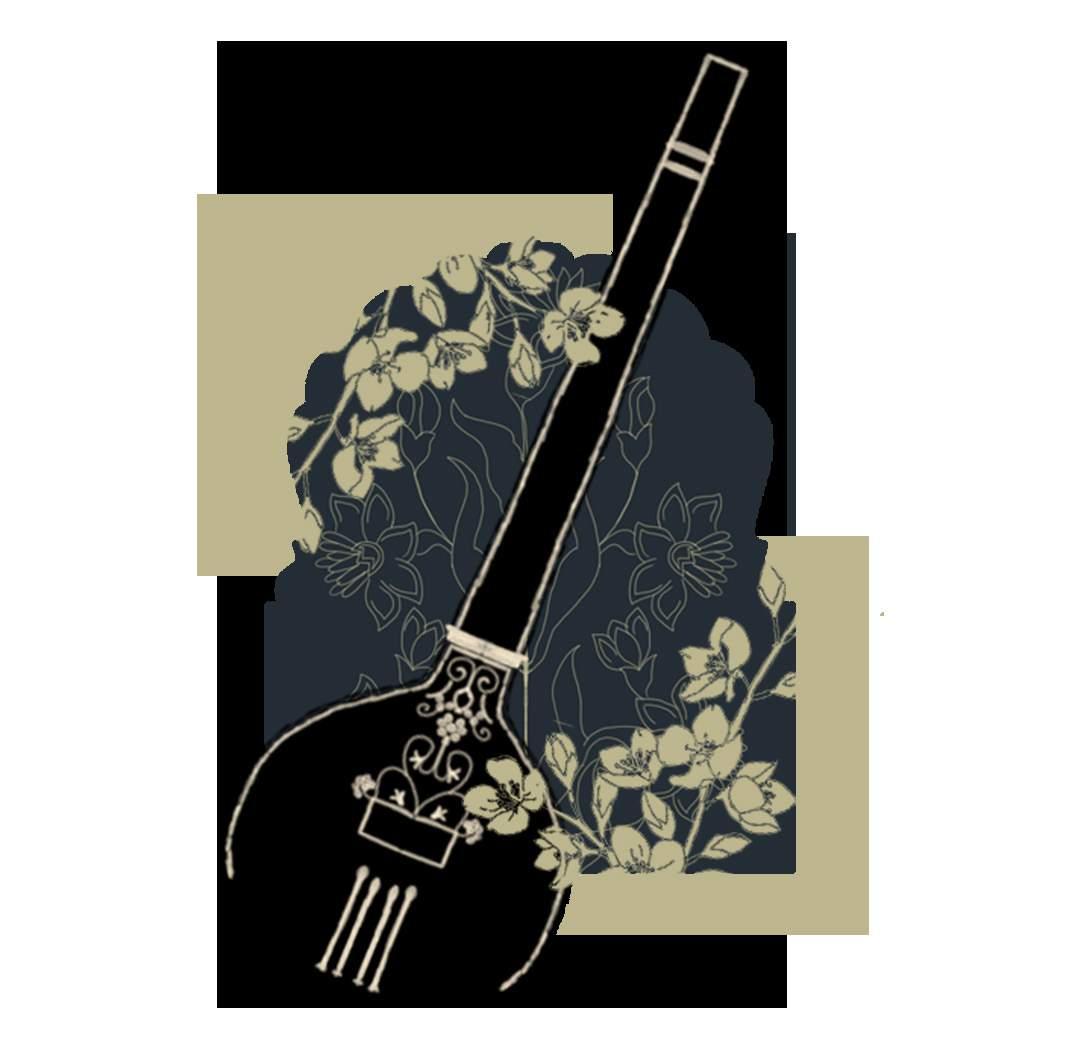

the stigma when it comes to mental health and emotional awareness. He opens up a space where men can feel vulnerable and connect with their emotions in a healthy manner.
Portraying Emotions
In his lyrics, he succinctly captures some of the defining characteris-
tics of depression. To understand them, listeners walk through his traumatic experiences. The song captures some of his very painful memories while describing some of the consequences of being afflicted by such traumas at a young age. This is evident in the verse “Kaash saans le sakte doob ke”, he says, “Tou aaj mera dost kamran hotha saath mein.” When I relate what he says to my emotions, I understand why he wishes the impossible was true and the past would change. He mentions the difficulty he has sleeping, because when he tries to do so, these emotions resurface. I also find it interesting how he draws a parallel between losing all contact with another friend to no longer being able to contact his father. This seemingly random parallel also alludes to how Durrani feels he can reach his dad through his music. Tying this to my personal experiences, I would often be told that “I am too sensitive” by my friends and teachers in middle school whenever I let a hint of sadness show. When Durrani fearlessly voices all these emotions in a very deep and poetic manner it shatters the narratives that have been pushed onto me and countless other men when we are told “You are too sensitive” or “Do not think too deeply.” It validates my personal struggles and helps me connect with my emotions and intellectualize them. To me, this song represents challenging a status quo upheld by patriarchal and toxic values that have brutalized emotional men and silenced them, because they threaten it. These values taint everything in society, from men’s interaction with people to the relationship between father and son.
spring 2023 | 35

36 | spring 2023
MISSING QUEENS THE
Missing queens
from whom the gods were born, their only remnants are constellations of kings and warriors they etched into the sky.


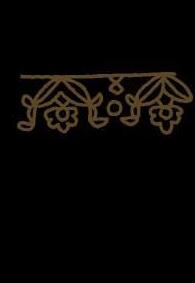















Their faces have melted into mirrors, mirrors to be watched and watched, as their ear and nose rings glint under the moon like a muted, dusky kaleidoscope.
Honor, purity, piety, pride, played in a perpetual dance of perfection… an eternity of pliancy under a divine forge, an eternity forged under stories of divinity.
Their anklets and earrings and bangles melted into boiling iron… a metallic river that flows and seeps, leaking into the cracks of divinity.
Liquid iron trickles onto pure white pages, marking the scrolls with steady drips. A steady rhythm to songs of passion, cries of battle and death, the steadfastness of courage and anger, and the shortening breaths of the minds that run with quick wittedness.


Through these songs, the missing queens wish to score our stories…
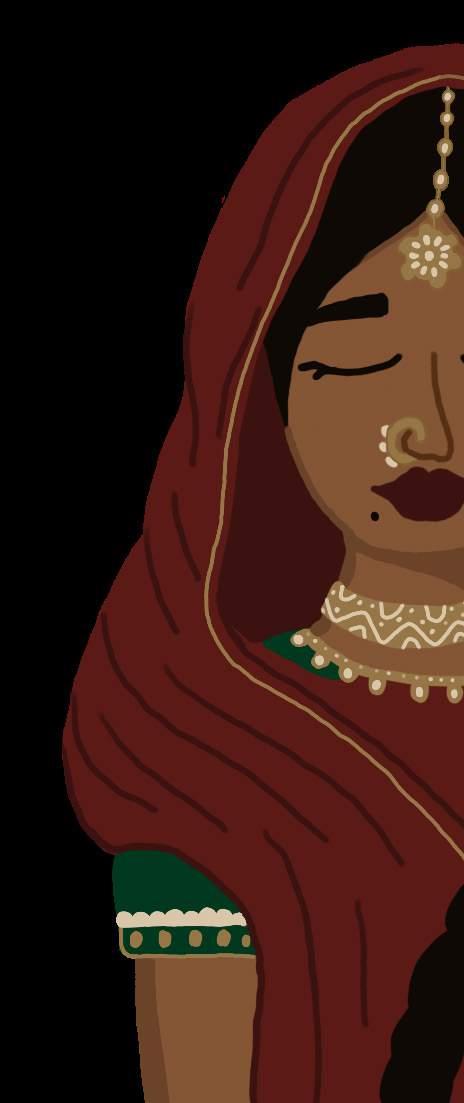
the stories played under the silence of honor, purity, piety, pride.
If you listen, they hum softly in the background: “I’m here, am I not?”
by Anushri Gade design/Daniela
spring 2023 | 37
Kate Abaqui -
Rishi. She mentioned that when she started her writing journey, her life was almost in shambles. She dealt with the deaths of her father, brother and mother in the span of a few months. So for her, writing through death after death had been really difficult. Rishi added, “I keep coming back to the word empathy because I think it is crucial to being a good writer. You have to trust and love your reader, and they have to trust that not only will you make a good story in the best way that it can be written, but you’re not necessarily going to hurt them, they have to trust that you’re going to tell the story the way it needs to be told. In order to get them to trust you, you have to have empathy.”


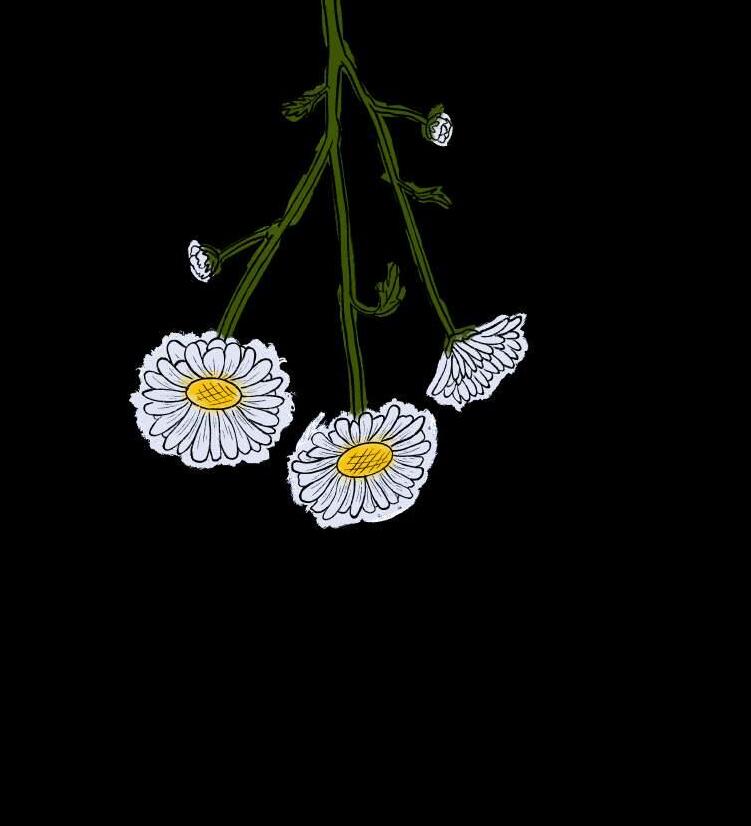
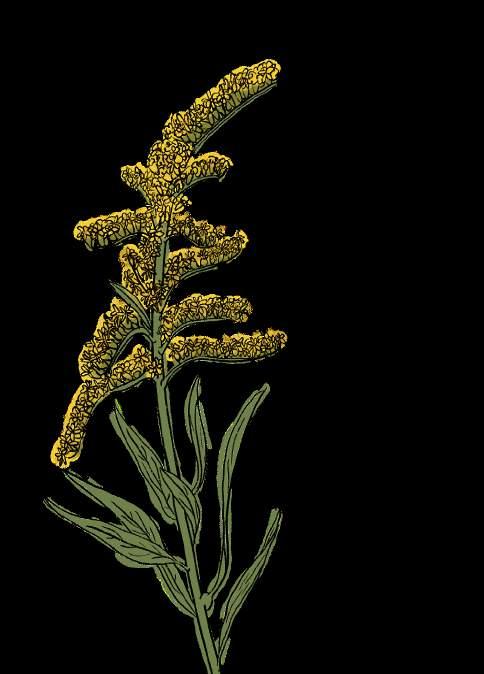
I was excited to ask Ying and Rishi about their inspirations. I wanted to know who inspired and fueled their creativity through hardships and periods of doubt. For Ying, authors like Octavia Butler, Kurt Vonnegut and Victoria E. Schwab are to credit. She mentioned that Schwab’s work made her “rediscover her love for fiction because she had lost that.” Rishi greatly credits Sabaa Tahir, a successful PakistaniAmerican YA author. Rishi said, “Everything that she writes feels like she’s speaking directly to my heart.” They also mention authors Jonathan Stroud, Charles De Lint, bell hooks and T. Kingfisher.
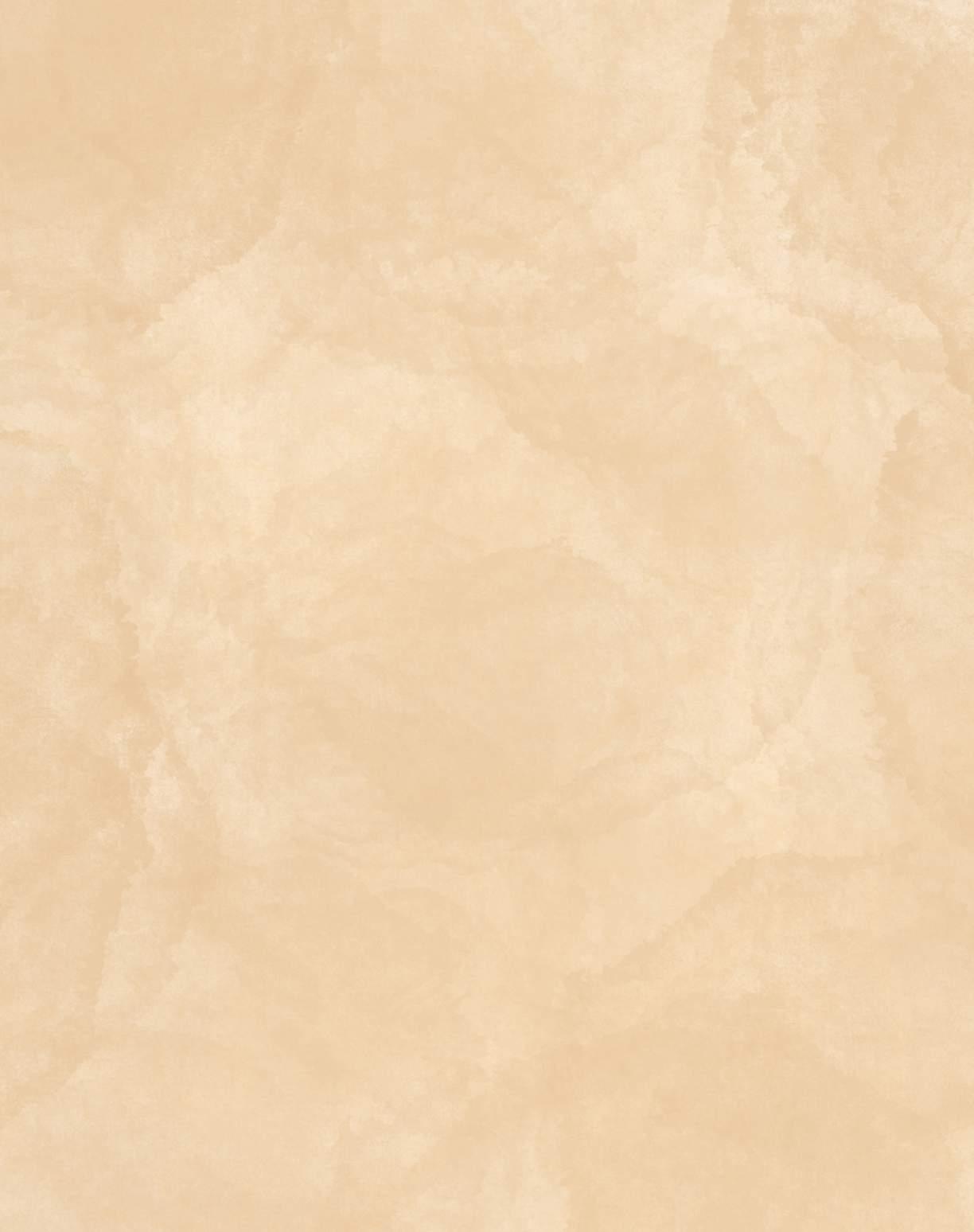
“I keep coming back to the word empathy because I think it is crucial to being a good writer. You have to trust and love your reader, and they have to trust that not only will you make a good story in the best way that it can be written, but you’re not necessarily going to hurt them, they have to trust that you’re going to tell the story the way it needs to be told. In order to get them to trust you, you have to have empathy.”
40 | spring 2023
—Farah Naz Rishi
Four Seasons
by

Her own desires now but a whisper. about who she is, what she wants, all the voices heard but her’s.
Goldenrods glisten with snow. Dark hair, dark eyes, dark circlesthe oil and water in her heart mix and hope slowly unfurls.


The spring brings strength and serenity and I realize that a healer can need healingThere is no dignity in denying my identity, There is nothing wrong with this feeling.
Orchids bring order and ornamentnot to my skin but my soul. Four seasons it took me to realize balance isn’t an achievement, but a goal.

Four seasons it took me to realize that it’s myself to whom I must be dutiful. I look myself in the eyes with my real truth, my real lies. My soul is battered and bruised and beautiful.

spring 2023 | 41
Fariah Ansari design/ Jessenia Abrigo
the way of the world
She thought she could do it all, She promised she would do it all.
She held in everything, like gripping sand grains in a tight fist. Only to see them slipping away,
weak to cold made her numb.

42 | spring 2023
by Alphy Maria Antony design/ Dan Pham art/ Joel Austin Jose
For when she spoke about her aching heart, she was called loud. For when she let people in, she was called easy. For once, when she confessed how she felt, she was called weak.
Her mind calculating the moments for her to smile. Frown lines overtaking her smile lines.
As she crosses each year of her life, she grew tired with the battle against life. She became an empty well, with no water to be drawn from.
She is too cold for this world, they said, melting away in the sight of the world who shunned her. Yet, she chose the way of the world, The world won Once again, against her.

spring 2023 | 43
Reconnecting with Carnatic Music

Origins:
South Indian music has roots that date back to the prehistoric era. In South India, the musical style known as Carnatic Music is also known as Karnataka Sangitam. Sanskrit, Telugu, and even Tamil were used in the composition of Carnatic music. A similar melody can also be heard in the mythological writings of the Vedic era. We’re not really sure where it started. The Mahabharata and the Ramayana are two important Hindu scriptures of the Vedic era that share similarities to Carnatic music. At that time, Carnatic music was simply a component of Indian classical music. Hinduism’s four Vedas also saw music as a way of worshiping God.
Religious Symbols:
Hinduism, the predominant religion in India, has a profound influence on Carnatic music. Hindu-
ism is built on a body of religious texts known as the Vedas. In fact, many academics claimed that the Vedas or the Gods arewhere music first originated, indicating the religious worldview. Veda is a Sanskrit term that means “knowledge”. Ruti, which means “what is heard,” is a word used by Hindus to describe their belief that Vedic texts are inspired by God. Brahma is attributed to creating the Vedas in the Hindu epic Mahabharata. According to the Vedas, Rishis (sages) expertly composed them after being inspired to do so. The Sama Veda, which is credited with creating Indian classical music, comprises hymns from the Rigveda that were set to melodies that were sung during Vedic yajnas using three to seven musical notes. The veena is mentioned in the Yajur-Veda, which is primarily composed for sacrifices, as a musical accompaniment to verbal recitations. Many ancient writings, including epics like the Ramayana and Mahabharata, make mention of Indian classical music. Carnatic music is regarded as spiritual with the power to uplift a person on an intellectual and emotional level. The lyrics mostly discussed various Hindu Ideologies and are based on religious themes.
Progression Of Carnatic Music:
The most common type of music in India was Carnatic; however, there were very few innovations. The 18th century was a turning point in the evolution of Carnatic music where there was a rise of three South Indian legends. They were Thyagaraj, Muthuswami Dikshitar, and Shyam Shastri; they were composers and vocalists of Carnatic music. They raised the bar for Carnatic music and created a number of brand-new ragas. Varnam, Padam, Javali, Tillana, Swarajati, and other new compositions entered the mainstream. Singers today celebrate
 Writter / Vaishnavi Yelchur |
Writter / Vaishnavi Yelchur |
44 | spring 2023
Graphic / Ishita Sen
and perform these legendary works produced in the 18th century. The method that is frequently employed for teaching Carnatic music was developed by Purandara Dasa, who is regarded as the father of Carnatic music. The two main elements of Carnatic music are talam and ragam. When starting music you must comprehend what a ragam and talam are. Ragams are the musical notes and modes in which a song progresses. These ragams are built upon the seven Carnatic musical swaras. The musical scale known as the raga contains Sa Re Ga Ma Pa Dha Ni. They also have 72 different musical notes. On the other hand, talam is the music’s pulse and rhythm.
Benefits of Carnatic Music:


Indian classical music helps us connect with our inner selves because of its naturalistic origins. Indian classical music has tremendous benefits on a person’s capacity for mindfulness since it increases our emotional awareness and has the potential to change our mood. Indian classical music can be enjoyed in a variety of ways, but regardless of how it is done, it always has a significant effect that improves one’s emotional, mental, and physical well-being. It helps us to restore health to our bodies, purify our thoughts, and boost our spirits. For instance, singing can enhance lung and breathing capacity. The brain’s motor functions are strengthened by playing instruments, and rhythm improves the organization of our thoughts and activities. Learning Carnatic music has been shown to strengthen and sharpen brain skills like hearing, memory, and others, with long-lasting advantages that shield the brain from the ravages of aging. The instruction enables committed students to acquire a sensitive sense of hearing, internalize, reflect, and carry out tasks with the utmost accuracy. Carnatic music depends heavily on memory.
Inherently, Carnatic music enables the vocalist to fully express themselves. Since creativity allows for a variety of accents and styles, it provides students with the opportunity to, in a sense, create their own original works. As a result, the vocalist acquires a personality that is intensely knowledgeable and active, acquired over years of devoted learning. Learners have countless opportunities to express themselves through Carnatic music. In Carnatic music, melody and rhythm coexist harmoniously. For performance, the integrity of these two components is crucial. To advance in the skill, these need to be properly fostered and developed. Carnatic music involves dedication and hard work, which elevates tenacity to a new level. In the past, I’m so grateful that my mother took me to music practice even though I hated having to wake up early on Sundays. But as I reflected, I realized how much Carnatic music had shaped and influenced my existence. It gave me the freedom to express my creativity, improvise with my singing, and feel closer to my flute. I’ve been motivated to play the flute by the songs I’ve learned, and I can now sing in addition to performing the instrument. Furthermore, it increased my breathing capacity and this benefited me when I was in the band and helped me with tone identification and synchronization as well. It has given me the chance to interact with bigger audiences, perform, and move outside of my comfort zone.
spring 2023 | 45
Bhojpuri Folk Music: A Dying Sound in the Diaspora
Pardesi pardesi jana nahi. Oh stranger, please don’t leave. Perhaps we have something in common? Perhaps you don’t know this song, but you know its story. Perhaps we are both children of empire, the posterity of a diaspora that began without our permission. Perhaps we were both lost until we found each other. Perhaps, pardes i, we might be friends.
The film i soundtracks of my childhood play on repeat in my head. Mornings always ring in with Bollywood and Bhajans, a salute to God and to the world’s largest film production industry. Ghazals fill the gaps in between, poetic songs that make us happy and sad all at once. Home is the sound of cumin seeds sizzling in oil and chai overflowing from the pot. It is the sound of evening rainfall on the metal roof and early morning mangoes falling to the ground. It is the echo of a loved one calling your name. All of these things culminate into the transnational sounds of you, pardesi , and of me, and of entire diasporas of today. But what of our ancestors and their journeys from the past?

The Origins of Diasporic Bhojpuri Folk Music

















Bhojpuri folk music is a form of Hindustani Classical Music, encompassing many distinct styles. It originated in the Indian states of Bihar and Uttar Pradesh, as well as Nepal. Since its inception, Bhojpuri folk music has spread and developed in countries like Trinidad, Suriname, Guyana, and Mauritius. Being in the Indo-Caribbean diaspora myself, many of my ancestors came from Bihar and Uttar Pradesh to Trinidad over
a century and a half ago. Their forced migration was a part of the British Empire’s implementation of indentured labor throughout colonies in 1834. Nearly 2 million South Asians were displaced overseas. They provided agricultural labor in the harvest of crops like sugar and coffee. Indentured laborers were deceived by the promise of a better life and compensation they could one day bring home. Many never returned.
From archival records, one person recalled that, “[the British] told us Trinidad was only six hours away by ship. But it took us 103 days to reach. Many died on board.” This recollection certainly reflected what my own ancestors endured upon boarding the boats of their new fate. Despite this being the history of so many South Asian people’s migration out of the subcontinent, it is not part of the mainland South Asian countries’ curriculums. Most South Asians don’t know my ancestor’s displacement ever happened. Although we, members of the diaspora, can reflect and share this history, preserving our own memory of our ancestors’ experiences of separation and loss requires an immersion into their journey.
While my grandparents and
great-grandparents once spoke Bhojpuri and Caribbean Hindustani, these languages have now died out in mainstream Indo-Caribbean society. The songs my ancestors sang of their experiences, and which later generations sang about their life in the diaspora, are fading away or getting lost without translation. Since the colonization of South Asia and the subsequent development of indentured servitude, many documents and archival records of this time in history have been damaged, lost, or destroyed by the British. Although some physical records remain in possession of families and others protected by national archives, music is one of the few cultural artifacts that preserve the first-hand accounts of many indentured laborers’ experiences. Nonetheless, this oral history remains threatened by losses in Bhojpuri folk music creation, preservation, and translation in the mainland as well as in the diaspora. I hope for others to discover the beauty and cultural necessity of such music, not only as folk songs dying out in the Indian countryside, but as the sound of a diaspora whose displacement is often forgotten.
How Bhojpuri Folk Music is Unique to Stories of Displacement
The tassa beats to the taal , the rhythm, like a celebratory metronome of life. Originally from Persia, tassa is a group of drums that was introduced to South Asia by the Mughals and spread across the world during the early 19th century through the diaspora. Dhol-tasha is the specific style of drumming that
by Vaidehi Persad design/ Jessenia Abrigo
46 | spring 2023
was carried overseas by labor ers from the Indian states of Bihar and Uttar Pradesh. The sound of tassa is one of celebration, of life and death, by Hindu and Muslim South Asians alike. It is an ancient yet familiar sound of movement and displacement over centuries. The harmonium, a South Asian reed organ, pulses through the percussive ensemble. Dhantal and khartal, cousins to the cymbal family, welcome a metallic sound just sharp enough to cut through the raucous. A voice emerges.
At the surface, the very sound of Bhojpuri folk music carries a sea of history. Yet, the lyrics match the instrumental backdrop with a depth of its own. Much of the Bhojpuri folk music produced explore feelings of exile and separation through allusion to the Ramacharitmanas, an Awadhi epic poem based on the Ramayanaa story of the Hindu Lord Ram’s years of exile, his wife Sita’s kidnapping, war and triumph. The Ramayana holds a special place in the Indo-Caribbean diaspora not only because of the origins of the story in our ancestral states, but also the familiar narrative of displacement. Even to this day many Hindu Indo-Caribbeans and others in the diaspora from the Awadh and Bhojpur regions invoke the names “Sita-Ram” as a common greeting in substitution for the more globalized “Namaste”.
Nonetheless, the messages of Bhojpuri folk music are not solely tied to allusions to Hindu epics, but also more broadly the journey taken by a diverse group of South Asians overseas to foreign lands. For this reason, there were frequent references to water, rain, and seas. Naturally, reference to the Ganges river and the Yamuna river has been prevalent not only within the context of its religious significance, but also as
a geographical component of the Awadh and Bhojpur regions. Indentured laborers that traveled from South Asia to other parts of the world crossed what is colloquially referred to as the Kalapani, or black waters. Known as jahajees or sailors, these laborers’ journey through the Kalapani signifies to some the ties that they cut with the mainland, while to others it is a symbol of surrender from mainland culture, dissolution of caste, and dishonor associated with abandoning family. To me, my ancestors crossing the Kalapani, unwillingly, is not a testament to abandonment but to preservation of community and traditions in spite of forced displacement.
Another lasting attribute of Bhojpuri folk music is the references to Springtime, Holi or Phagwah, and the general celebration of color, Spring, and love. Known more commonly as Holi or the festival of colors, Phagwah is a huge part of Indo-Caribbean society each year. Besides the religious significance, Phagwah asserts the triumph of good over evil, marks the beginning of Spring, and commemorates divine love as found in the story of Radha and Krishna. This last component of Phagwah carries additional significance in remembering the families separated from their loved ones in this forced migration. In one Bhojpuri folk song in a subgenre of love and
separation a person sings: “Like sparks from a fire within, my tears set my eyes ablaze. Meeting my lover is a distant dream, my bones will rot before I see him again”. Even in invoking this festival of love, separation is still a constant theme.

The Future of Bhojpuri Folk Music

















In the wake of Indo-Caribbean society’s loss of fluency in Bhojpuri and Caribbean Hindustani, communities have made real efforts, intentionally and coincidentally, to maintain a history so intertwined in these dying languages and eternal sounds. Chutney in the Caribbean is synonymous to the musical fusion of Bhojpuri folk music with Calypso, Soca, and later Bollywood influences. Chutney music was initially created between countries like Trinidad and Guyana as South Asian laborers settled into the early to mid twentieth century. While chutney music has evolved over almost eight decades, it is still a music industry very much alive today to maintain the stories and sounds of the first folk songs brought to the islands by laborers. Whether through cultural performances, religious festivals, or celebrations, Bhojpuri folk music still lives on in certain aspects of the Indo-Caribbean community.
Pardesi mere yaara vaada nibhana. Stranger, fulfill your promise. Mujhe yaad rakhna kahin bhool na jaana. Remember me and don’t forget me. Don’t forget my ancestors’ displacement and the forced labor of my diaspora. Knowing each other’s histories is so important in understanding each other, honoring our heritage, and building community together. I hope that these musical traditions remain and that the sound of my diaspora never becomes obsolete
spring 2023 | 47
Who Am I? : An Exploration of Self-Discovery
An arranged marriage in India set the stage, for my parents to fall in love and hopefully grow old in age.
As my parents moved across the world to start a new life, it allowed me to develop an identity that sometimes felt like it was cut by a knife.

Being born in the United States, Feeling fully Indian or American was never the case.

or there, I'm not really sure if I blend amywhere.

Whether I'm here,
“I love Indian food that’s extra spicy!” They would reply.
“Oh, nice!” I’d say, knowing I didn’t like spice even if I’d tried.
Where are you from?” People would eagerly ask, “From India!” I’d say feeling like I was wearing a mask.
Going to the mall and buying a blouse with the sleeves removed, Even though I knew my aunties and uncles disapproved.
W r i t e r : S a y o n a J o s e D e s i g n e r : A b d u l M o e e d Z a h i d
48 | spring 2023
But
Even though I knew Malayalam was within, English was the language I felt most comfortable in.

But
There were parts of me that I felt like I couldn’t control, Such as the way Indian music awakened my soul.
Never really interested to watch a cricket or Kabaddi team, but during the NBA finals or the Super Bowl, you could find me cheering on with a scream.

It was only recently that I learned the true amenity of my mixed identity.
“Choose a side” is something I always jokingly heard, “but having roots in India and branches in America was what had really occurred.
Life seems to be a beautiful journey where we can all discover who we truly are.
Some may travel fast, while others may travel far.
We may meet people along the way, that change who we are at the end of the
But the beauty of it all, is that our identity has no wall.

spring 2023 | 49
recommends books


I have loved reading for as long as I can remember. The highlight of my week would be my trips to the library, where I would pick out books to read before bedtime. I loved running my hands over the bright covers and feeling the smooth texture of the pages as I embarked on my next adventure. Reading stories with protagonists that have aspects of my own culture woven into their tales has given me more appreciation for my rich background. Some impactful books that I have read include All My Rage by Sabaa Tahir and We Hunt the Flame by Hafsah Faizal.
All My Rage by Sabaa Tahir


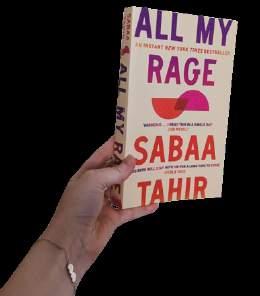
The story follows Noor Riaz, a girl who was rescued from an earthquake in Pakistan, and Salahudin Malik, a boy who is struggling to keep his family business afloat and support his alcoholic father. Noor is the victim of an abusive household and Sal is grieving the loss of his mother. They find comfort and solace in each other, as they are able to understand each other in a way that others never will. Reading a book about Pakistani American Muslims written by a relatable author was empowering and I was able to see pieces myself in Noor and Sal. Engaging, powerful, and brilliant, All My Rage is a testament to familial bonds, the power of friendship, and the fragile hope to achieve the American dream.
We Hunt the Flame by Hafsah Faizal

The story follows Zafira bint Iskandar, a huntress who provides for her village, and Nasir Ghamek, the heir to the Arawiyan throne. They are both sent on a mission to retrieve an artifact that will save the land from being engulfed by the shadows of the growing Arz, a malicious forest. While Zafira wishes to use the artifact to restore magic to the world, Nasir is sent to retrieve it and kill Zafira. The two of them, along with their companions, become unlikely allies as they traverse the Arz and fight to protect their lands. Finding a book which highlights aspects of Islam, as well as many of the values that I have has always proven to be a difficult task. However, the series has great worldbuilding and character development that any reader will be able to appreciate.

design/ Dan Pham
50 | spring 2023
writer/ Fariah Ansari
food
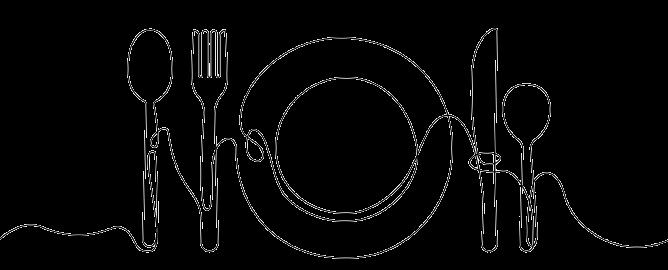
I’ve always loved exploring restaurants and trying new dishes. Whenever I go to a new city, I make sure to look for a good Asian restaurant. Vietnamese, Chinese, Japanese, Korean, Malaysian, and more! Below are some of my top recommendations for Asian food around the USF area! Steaming pockets of dough that hold a rich and hot broth paired with shining noodles dripping in chili oil. Lan Zhou Lamen Noodle House found in a strip mall off Fowler is the perfect place for belly-warming noodles. Their menu of the many versions of hand-pulled noodles has something for everyone. My two top recommendations are their soup dumplings and House stir fry. I love drenching their House stir fry, which has a mix of vegetables, beef, chicken, and shrimp in chili oil. I always end up splitting a basket of soup dumplings with a friend as an amazing side dish.
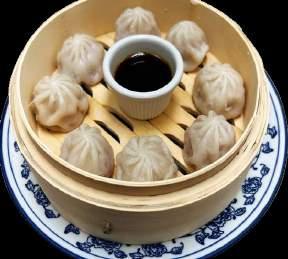
Sizzling bowls filled with colorful vegetables and tender bulgogi beef. Soul of Korea features an extensive menu accompanied with photos of every dish. My favorite item to get from Soul of Korea is their bibimbap, specifically in a stone bowl. The stone bowl comes sizzling hot and leaves you with crispy rice at the edges of the bowl. Normally, I’ll draw shapes in my bowl with the gochujang sauce before breaking the shining yellow yolk and mixing everything together.
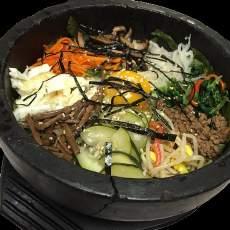
A piping hot bowl of ramen under a cover of bamboo shoots, bean sprouts, nori, and two halves of a jammy egg. Michi Ramen has been a staple in my restaurant rotation after finding the ramen house with my friend. A lot of my memories with friends are tied to their bowls of ramen. After we won the Student Government election, Nithin and I went to Michi Ramen and celebrated over twin bowls of their spicy oil Tonkotsu. I highly recommend either their spicy oil and black garlic Tonkotsu ramen, whichever you get just depends on your spice tolerance. Another great option there is their braised pork rice bowl. The piece of pork melts in your mouth, and eating it with the sauce-soaked rice is just delicious.

travel

You’ve been missing out if, like many others, you only stop by Da Nang city as a transit point to get to more well-known tourist destinations in Vietnam like Ha Noi, the capital city, or Ho Chi Minh city.

This spot has a special place in my heart not just because it’s where I was born and raised, but also for its beautiful scenery and hidden gems waiting for your discovery. From rivers, beaches to mountains, Da Nang is a onestop shop for all. Just as the famous Oscar-nominated movie title goes, “everything everywhere all at once” describes the city perfectly.
 writer/ Amy Pham
writer/ Amy Pham
spring 2023 | 51
writer/ Quyen Tran
My Khe beach. Song Han river. Five-marble mountains.
These are just a few of the beautiful tourist attractions drawing an incredible number of visits every year. Da Nang is especial ly crowded over the summer as it is most known for being a beach city. So, avoiding the peak tourist season would leave you and your companions to the best of nature’s beauty.


Even at its busiest, Da Nang’s charm lies in its perfect blend of modern and ancient features, providing you with maximum conve nience without losing itself to overpopulation, pollution and traffic jams all day long. This is the key feature distinguishing Da Nang from Viet nam’s major cities and more popular destinations like Ha Noi and Ho Chi Minh city.
Additionally, wonderful cuisine specialties like banh trang cuon thit heo (pork spring rolls) with its signature mam nem sauce (fermented fish sauce) and Mi Quang (central Vietnam’s signature noodles with sauce) are recommended for a memorable culinary experience. I am sure you won’t be able to help wondering how friendly and hospitable Da Nang people could be to help you along the way in finding the right streets for food or the right way to a travel destination!
fashion

How many Jhumkas are too many Jhumkas?

Fashion can be copied but Style is inbuilt. In the past few years, I have explored every kind of fashion style- Asian and American, Bohemian even. The way one styles themselves is an expression of their identity and personality. Every woman goes through stages of styling herself and so did I. From preferring masculine styled clothes to developing an affinity for feminine fashion, I experienced self-growth and a realization that fashion can be an expression. An expression of ideas, feelings, statements, and more. Since the past 5 years, I have preferred wearing jhumkas on every outfit possible. Jhumka is a traditional South Asian earring made out of gold, silver, or my favorite kind- oxidized. They come in various shapes, sizes, colors, and patterns and look best on darker or neutral tones of clothing. This earring fashion has recently become a trend among South Asian celebrities and a fan favorite for young-adult women. Fashion is supposed to evolve and grow with the person embodying it. My jhumkas have successfully engineered its own evolution through the different stages in my personal growth. I hold this fashion style close to my heart and I recommend anyone and everyone out there, to find their own jhumka!

So, are you ready to join me for a trip to Da Nang? Trust me and grab your next flight ticket to Da Nang city.
writer/
Thakurdesai 52 | spring 2023
Sanikaa
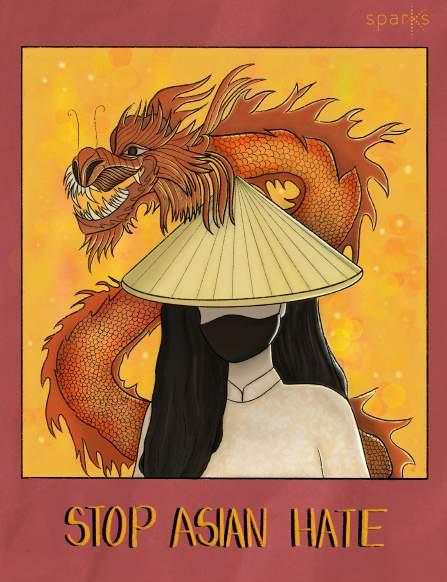
spring 2023 | 51
artwork by Amy Nguyen










































 Sparkling, Sanikaa Thakurdesai Editor-in-Chief
Sparkling, Sanikaa Thakurdesai Editor-in-Chief
















 by Alphy Maria Antony
by Alphy Maria Antony
































 by/ Merita Thomas design/
by/ Merita Thomas design/


































 Writter / Vaishnavi Yelchur |
Writter / Vaishnavi Yelchur |

























 writer/ Amy Pham
writer/ Amy Pham







